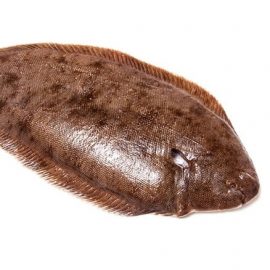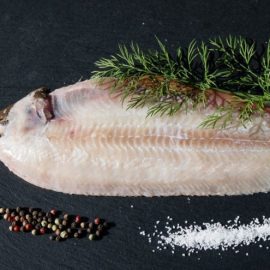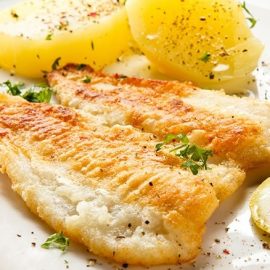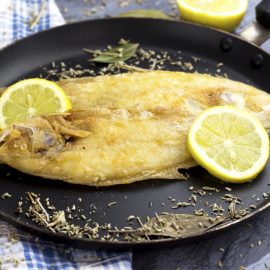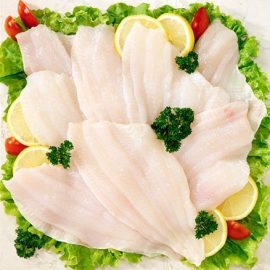
Introduction to the Yellowfin Sole
The Yellowfin Sole (Limanda aspera) is a white-fleshed, abundant flatfish species found in waters off the coast of Europe, Asia and North America, with most stocks in the North Pacific Ocean.
It is a popular option for home cooks and restaurants due to its mild, sweet flavour and tender, flaky, yet slightly firm texture. Compared to other similarly-sized flatfish, such as Dover Sole, the Yellowfin Sole has a more delicate flavour profile and is generally much milder.
Additionally, the Yellowfin Sole is widely acclaimed as a ‘superfood’ by nutritionists, as it is rich in healthy Omega-3 fatty acids, B vitamins, niacin, zinc, selenium, phosphorus and magnesium. It also contains fewer fat and calories than similarly-sized fish, making it healthier.
Physical Characteristics
The Yellowfin Sole has an elongated, oval-shaped body and smooth skin, with few scales visible around its head and fins. Its two eyes and mouth are asymmetrically placed: its eyes are on one side of its body, while its upper jaw is slightly longer than its lower jaw and has a somewhat sharp downward angle.
Its fins are yellow or orange, particularly on its left side, where the two dorsal fins and two anal fins are located. Its caudal fin is slightly forked, and its pectoral fins, located on its underside, are small and used for short-distance swimming. The species’ body displays a mottled pattern of narrow dark line, while its tentacles are fringed with small spicules.
Yellowfin Sole are hermaphroditic, meaning they have both female and male reproductive organs. They typically grow no larger than 10 inches in length, ranging in size from 4-16 inches and 1.3-3.2 pounds in weight.
Habitat
The Yellowfin Sole shares its habitat with many other related species, including Bony Fish such as Halibut, Pollock, and Cod. All these species are essential for commercial and recreational fishing, providing a valuable food source and income for people living in fishing communities.
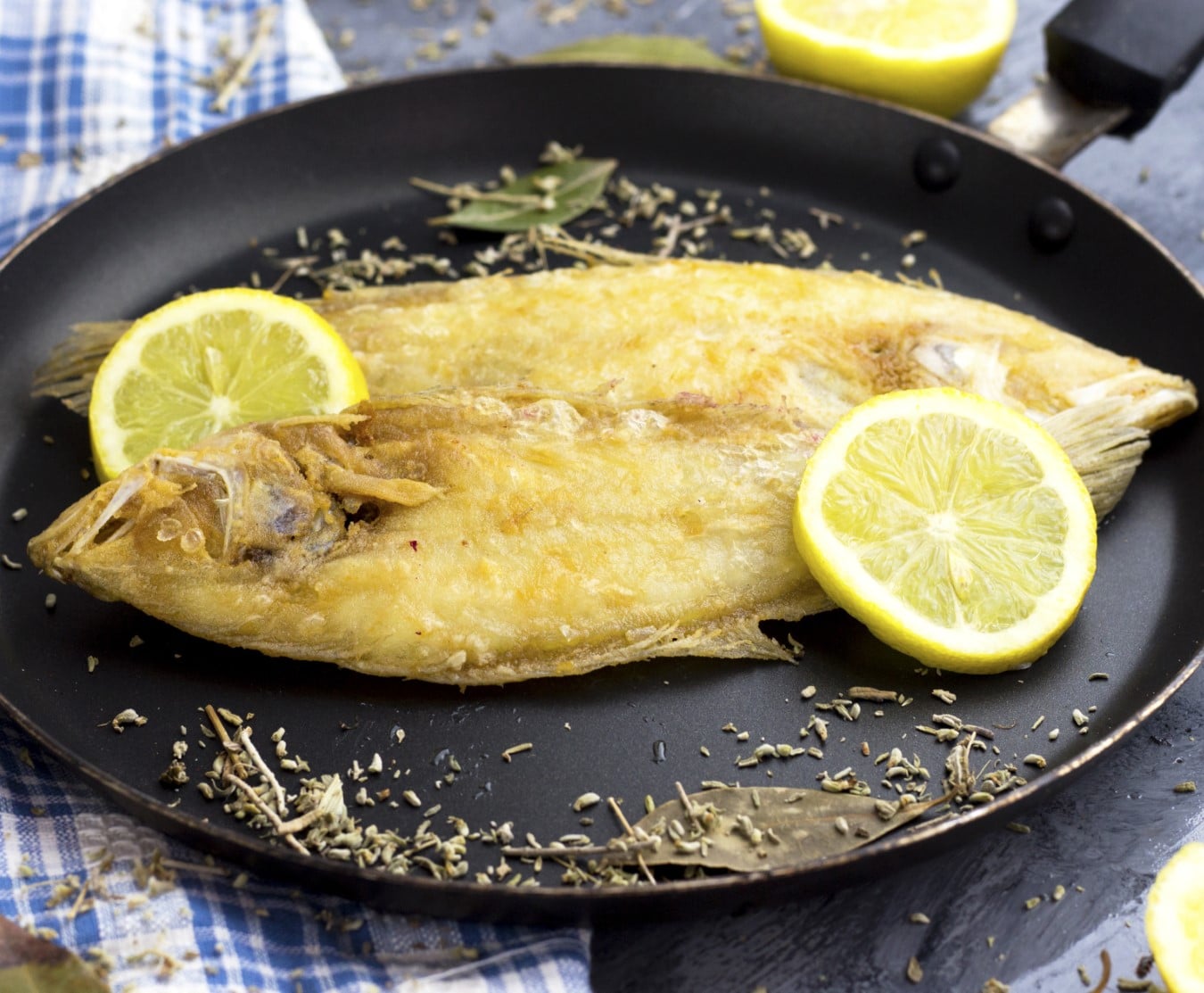
Yellowfin Sole Fishery Management
Since 1950, the Food and Agriculture Organization of the United Nations estimates that nearly 5 million tons of Yellowfin Sole caught in the Pacific Ocean. Its total catch peaked in 2006 at over 800k metric tons, yet since then, it has generally seen a decline, with two minor peaks in 2007 and 2013. Today, the annual catch of Yellowfin Sole in the Pacific Ocean is estimated to be approximately 500k metric tons.
US commercial fisheries harvested approximately 200 thousand tons of Yellowfin Sole in the United States in 2018. Of that amount, shellfish fisheries in Maine and California account for most of the catch. Generally, Yellowfin Soles can live up to 10-15 years, with a maximum recorded size of 33 inches. To ensure sustainable fishing practices and preserve its stocks, the US has enacted regulations limiting the size, trip limits, gear restrictions, and minimum mesh sizes. The species is an integral part of many commercial fishing industries in the US and serves as an essential revenue source for some regions.
Population and Conservation
The Yellowfin Sole is the most abundant flatfish species that has little conservation concern due to its wide range and moderate abundance. However, it is vital to maintain ongoing monitoring of the species to identify any potential decline in the population caused by factors such as overfishing, habitat degradation and climate change.
The International Union for Conservation of Nature (IUCN) has assessed the Yellowfin Sole as a species of Least Concern due to its extensive natural range and population status. This assessment confirms its sustainability.
Several organisations are taking steps to conserve the species, such as the Marine Stewardship Council, which works to assess and protect the species and Changing Tastes, which focuses on shifting seafood consumption away from overfished species and towards more sustainable and ecological choices like the Yellowfin Sole. Aquaculture techniques are also being developed to help increase the supply of Yellowfin Sole and reduce the pressure on wild populations.
Distribution of Stocks
The Yellowfin Sole is primarily found along the coasts of the United Kingdom, France, Ireland, Norway, and Iceland; however, this species is also found in other parts of the world. It prefers muddy, gravelly, sandy ocean bottoms ranging between 20 and 300 metres.
Conservation Status
Despite the high fishing activity in its native range, the Yellowfin Sole is managed sustainably and rated a ‘Good Alternative’ by the Monterey Bay Aquarium’s Seafood Watch program. The species is certified sustainable by organisations such as the Marine Stewardship Council and the Alaska Seafood Marketing Institute.
Sustainable Fishing Practices
The Yellowfin Sole is commercially fished throughout the UK, but anglers actively seek out this species.
The fishing of Yellowfin Sole is subject to a range of regulations and quotas, including those set by the Marine Stewardship Council certification, to ensure that the population is maintained and the fishing is sustainable.
Other management measures include research surveys, bag limits, and closed/restricted areas.
Yellowfin Sole’s Diet
Yellowfin sole is omnivorous, meaning they eat a variety of food sources, including smaller fish, plankton, detritus, worms, molluscs, and crustaceans. The type of food sources eaten by a given specimen may depend on their habitat and location, with some being more predatory than others.
A yellowfin sole feeds mostly on scavenged material from the seafloor or caught in the water column, as well as small amounts of plant matter. They tend to provide near the bottom of the seafloor during hours of low light, such as during dawn and dusk, or at night, where they can detect prey using their lateral line system, which detects vibrations in the water. Fish like cod and halibut prey on yellowfin sole juveniles.
Spawning and Reproduction
Yellowfin Sole reaches maturity around 1-2 years of age, depending on location. The fish spawns in early spring, peaking around June-July in the Northern Hemisphere, and the process generally takes two or three months.
During spawning, the male utilises a pheromone to attract the female, who then deposits her eggs onto the seabed. The fertilised eggs are pink and suspended in the water column. The larvae develop in the planktonic state and release to the environment after approximately three weeks.
Life Cycle of Yellowfin Sole
Yellowfin Sole migrate to the shallow eastern Bering Sea shelf and the Gulf of Alaska before returning to their adult habitat. A school of juvenile yellowfin sole congregate along the western Aleutian Islands and the northeastern Gulf of Alaska, with adults typically inhabiting the seafloor in depths of 20-400 meters. Soft substrates such as sand or mud are preferred habitats for this species, mainly feeding on polychaete worms, crustaceans, and small fish.
The Yellowfin Sole’s life cycle begins with laying an egg in the open ocean, typically hatching within 10 to 20 days. From there, it goes through a series of stages – juvenile, sub-adult, sub-adult-2, adult-1, and adult-2 – before becoming mature. During this time, the fish moves between cooler, deeper waters in the summer, and warmer, shallower water in the winter, remaining near its spawning grounds. Adults can live up to 8 years.

Culinary Value
The European culinary community highly prizes the Yellowfin Sole for its delicate flavour and texture. It is served in many restaurants, and supper clubs, often prepared as fish, chips, or sashimi. In some cultures, the Yellowfin Sole is used as bait to catch larger game fish.
Importance to the Environment
Yellowfin soles are an integral part of the marine ecosystem as they help keep populations of other organisms balanced whilst being a critical food source for fish, birds, mammals, and reptiles. As such, monitoring the population and health is vital to the future of healthy oceanic ecosystems.
Nutritional Content and Health Benefits
Yellowfin Sole is an excellent source of essential nutrients, including protein, omega-3 fatty acids, vitamins, minerals, and phosphorus. They contain 20 grams of high-quality protein per 3.5 oz serving, making them a great source of lean protein and low in calories and fat – perfect for people watching their intake.
The Yellowfin Sole is also a rich source of selenium, vitamin B12, niacin, and omega-3 fatty acids, which are beneficial for heart health, reducing inflammation, and preserving brain function. This fish is also a good source of calcium and magnesium, which are essential for bone health.
The fish is shallow in mercury, making it one of the safest contaminants to eat. The oil content of Yellowfin Sole also makes it an excellent option for those looking for more healthy fats in their diet.
Versatility
The Yellowfin Sole is not only renowned for its delicious flavour and nutrient-dense profile, but it is also incredibly versatile. It can be cooked in various ways, such as pan-frying, baking and broiling, making it an excellent choice for any home cook.
Cooking and Eating Yellowfin Sole
The most common way to prepare Yellowfin Sole is by baking, grilling, sauteing, pan fry, or poaching. Preheat the oven to 375F and place the fillets onto a pre-heated baking tray to bake. Drizzle the raw fish with olive oil, rapeseed oil or butter, season with salt and pepper, add herbs and spices and bake for 12-15 minutes or until the flesh is cooked through.
To grill, preheat the grill to medium heat and add the fillet. Cook for 4-6 minutes per side or until done.
To sauté, heat a tablespoon of oil and add the fillet. Cook for 3-4 minutes per side or to your liking.
To pan fry, heat two tablespoons of oil and add the fillet. Fry for 3-4 minutes per side or until the flesh reaches the desired doneness.
To poach the fish, boil a pot of salted water and add the fillet. Cover and reduce the heat. Simmer for 7-10 minutes or until the flesh is cooked through. Always check the colour of the fish before serving – if it turns opaque or white, it is done and can be served.
Taste and Texture
Yellowfin sole’s mild, sweet flavours distinguish it from other fish species. Its delicate, flaky flesh is complemented by a moderate amount of oil that gives it a slight sweetness.
When cooked, the flavour of yellowfin sole is further enhanced by the variety of spices and sauces available. Its mild taste means it can take on the flavours of whatever seasonings or sauces you choose, making it ideal for adding as a highlight in several dishes, such as fish soups, salads, and pasta.
Garnishing and Serving
Common garnishes used to garnish Yellowfin Sole include fresh dill, lemon slices, chopped parsley, and capers. The oil used to cook the fish can also be flavoured with aromatic herbs and spices. Alternatively, the fish can be added to soups or stews and cooked in the liquid.
Side Dishes
When served alongside mustard, herbs, and citrus, the delicate flavours of Yellowfin Sole are further highlighted. Popular side dishes for Yellowfin Sole include roasted vegetables, wild rice, roasted or mashed potatoes, steamed vegetables, couscous, steamed greens, roasted asparagus, herbed rice, lemon butter sauce, and wine and vinegar. Mediterranean influences are also becoming popular, with sides such as olives, artichokes, and capers incorporated to add unique flavours.
Seasonal vegetables can also add colour and texture to the dish, such as squash, asparagus, green beans, roasted zucchini and red peppers, carrots and parsnips, and grilled tomatoes.
Other popular accompaniments to Yellowfin Sole include onion, garlic, lime, parsley and various starches such as mashed potatoes, roasted potatoes, risotto, pasta, and quinoa. Fresh herbs, like oregano and rosemary, can also be used to enhance the flavour. A popular combination when cooking Yellowfin Sole is a bed of herbed rice topped with pan-seared fish and grilled vegetables.
Popular Recipes Across the Globe
Due to its availability and culinary versatility, yellowfin sole is a popular food item featured worldwide. Popular recipes include Asian-style pan-fried sole, baked sole with olive oil and capers, braised sole with lemon juice and sage, poached sole with butter and parsley and the French classic Dover Sole Meuniere. Other global variations, such as Indian Sole curry and Mexican-style fish tacos, also use Yellowfin Sole.
In Spanish cuisine, ‘Plancha’ or grilled fillets of Yellowfin Sole are ever-present and usually served alongside toasted or grilled baguettes and pickles.
In Japanese culture, tempura-style fried Yellowfin Sole is favoured and served with a complimentary dipping sauce. For lighter meals, a suitable option is yellowfin sole sashimi.
Ecological, Economic and Cultural Impact
The Yellowfin Sole has a broad ecological, economic, and cultural impact on many countries in the Pacific. This species is an important food and recreational fish for commercial and recreational fishing, but it is heavily regulated due to overfishing and the need to maintain a healthy population.
It is an essential food source for coastal and small-scale yellowfin sole fishery, providing both humans and animals with a rich source of omega-3 fatty acids, vitamin B, and minerals.
Conclusion
In summary, Yellowfin Sole is a delicate fish that enjoys immense popularity across the globe due to its versatility and wide availability. With its light yet succulent flavours, Yellowfin Sole can be incorporated into multiple recipes and cooked in many ways, providing a unique gastronomic experience each time. From Asian-style pan-fried soles to the classic French Dover Sole Meuniere, the fish has a range of interesting and exciting dishes that make it an excellent addition to any menu.
